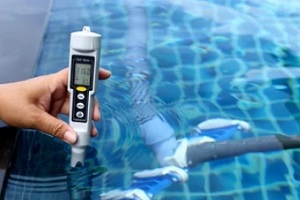 Any business owner who operates a facility with water-based equipment is likely familiar with Legionella. This life-threatening bacteria can be avoided with constant, vigilant upkeep of the water system. Keeping individuals safe should always be the top priority, and is required for compliance with most local and state health regulations.
Any business owner who operates a facility with water-based equipment is likely familiar with Legionella. This life-threatening bacteria can be avoided with constant, vigilant upkeep of the water system. Keeping individuals safe should always be the top priority, and is required for compliance with most local and state health regulations.
Some types of machinery are more vulnerable to Legionella outbreaks than others. Spa pools are one of the most common Legionella bacteria spreaders. Understanding why spa pools could pose such a high health and safety risk, and how to mitigate that risk of legionella, is vital to being a responsible facility owner.
The Typical Spa Pool And Its Function
The term “spa pool” specifically refers to self-contained bodies of warm water that are agitated for the purpose of sitting or lying in. This type of equipment does not include open pools or cold-water pools, where the purpose is to swim or immerse oneself in full – these need different treatment approaches.
Chemical disinfection and filtration are required for spa pools, where the water is kept at an average of 86 to 104 degrees Fahrenheit—an ideal Legionella breeding range. Even though spa pools are drained and refilled after a set period of time or after a certain number of spa pool users, Legionella may not be purged from the system unless there is dedicated cleaning.
Why Spa Pools Are Especially At Risk Of Legionella
Among water-based equipment such as condensers and water fountains, spa pools pose some of the highest risk for spreading Legionella. The main reason is that the water temperature is not hot enough to kill the bacteria; the heat required to do so is too hot for humans and can burn skin on contact, at 158*F. Air jet circulation or induction bubbles used to agitate the water create aerosols, which in turn eject water droplets into the air. .
If the water is contaminated, Legionella is transported in these droplets and migrates from the spa pool to humans. This risk is increased in accordance with a person’s proximity to the spa pool. Since spa users are entering the tub and submerging themselves in a cloud of aerosolized steam, their risk of contracting Legionnaires’ disease is greater than that of someone walking nearby.
Even though spa pools use chemicals to treat the water, human bodies carry bacteria, microbes and other particles that Legionella bacteria can feed upon. Spa pools also encourage intermittent visitation: people come and go multiple times according to their comfort. This promotes the consistent reintroduction of newly dirtied feet and the bacterial breeding ground that accompany them.
A Checklist Of Spa Pool Maintenance For Legionella Prevention
 Maintaining a spa pool should be comprehensive, not difficult. Those who come into contact with Legionella bacteria may suffer severe health problems or even fatal pneumonia, so it is crucial to treat spa pools for bacteria. Make sure to check off each of the following tasks at the appropriate time.
Maintaining a spa pool should be comprehensive, not difficult. Those who come into contact with Legionella bacteria may suffer severe health problems or even fatal pneumonia, so it is crucial to treat spa pools for bacteria. Make sure to check off each of the following tasks at the appropriate time.
Daily, you should:
- Inspect the drains, strainers and automatic systems for signs of damage or clogging
- Record any incidents that need further investigation
Weekly, be sure to:
- Drain and clean the entire system, including the strainers
- Visually check the balance tank
- Inspect and clean all water jets
- Perform microbiological testing
- Perform chemical testing
Once per month:
- Disinfect the flex hoses
- Clean the input air filter
Every quarter, be sure to:
- Check that all filters are performing as intended
- Clean the air lines
- Check and (if necessary) replace the sand filter
You can make spa pool maintenance simple by spreading out these steps into singular daily tasks to be done each day at an appointed time of the year or month The spa pool model in use will come with specific instructions that recommend the proper cleaning timelines for each of the model’s elements, like the sand filter and canisters. Spa pools that are kept outdoors will need more frequent disinfection.
Another option for preventing Legionella outbreaks is to add dehumidification to the spa pool’s surrounding area. Because most Legionella is transferred to humans via the pool’s steam clouds, dehumidifying the spa pool room or enclosure will eliminate steam buildup. Add dehumidification to the pool’s regular maintenance plan.
Trust The Professionals To Keep Your Water Features Safe From The Risk Of Legionella
The experts at Tower Water would be happy to help you develop a customized strategy for maintaining and disinfecting your water features. Reach out to learn more or to schedule an appointment.
